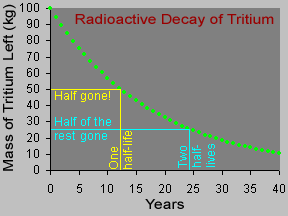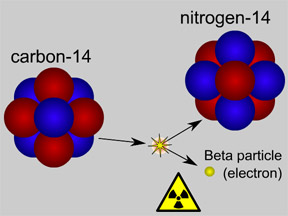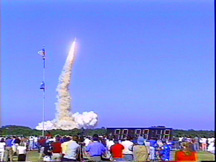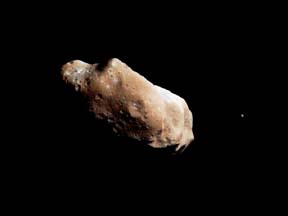Click on image for full size
Courtesy of NASA
Related links:
Flying Atoms?
News story originally written on June 4, 1999
Scientists have found a possible source of the high speed atoms flying through space in the form of cosmic rays. These atoms reach velocities close to the speed of light. It was known that the source of the energy that causes the high speeds is a supernova, or exploding star. However, the exact source of the actual atoms was unknown until now.
Using an instrument aboard NASA's Advanced Composition Explorer (ACE), scientists are able to investigate the cosmic rays, and have come up with some surprising results. It was once believed that the atoms came from the actual supernovae themselves. However, NASA scientists now believe the atoms are pieces of dust and gas already in space, being pushed through by the explosions.
The scientists studied two types of atoms, Nickel-59 and Cobalt-59 (the 59 represents the isotope). The Nickel atom is radioactive, and when it decays the atom turns into Cobalt. The decay, or the amount of time needed for half the Nickel to decay, is 75,000 years. The atoms studied, however, show that the Nickel had been decaying for more than 100,000 years, waiting for another explosion to begin its journey through space.
Cosmic ray atoms are special because they lose their electrons when moving at high speeds. In order for Nickel to decay, however, the atoms need to absorb an electron. They can't absorb an electron if they are being blown off while the atom is traveling at the speed of light. This means that the Nickel had to be stationary in order to decay. Scientists conclude that the atoms couldn't have decayed while heading towards Earth. Therefore, they must not be directly from the supernovas.















